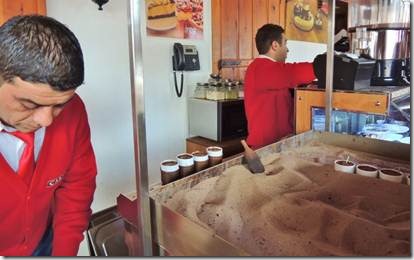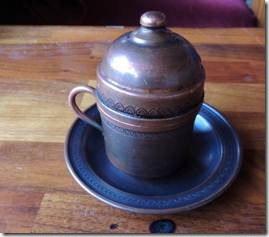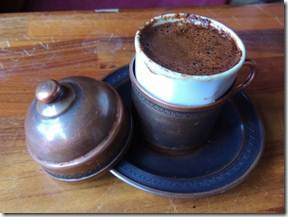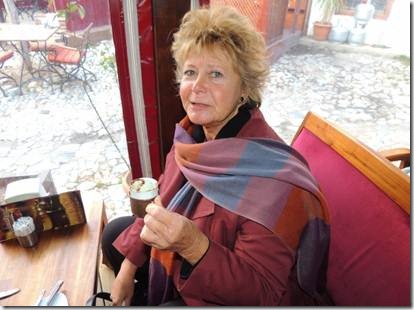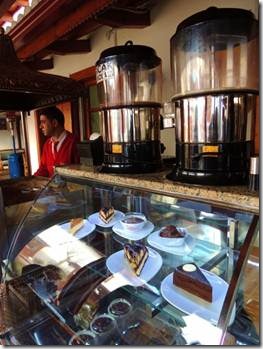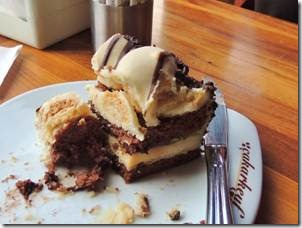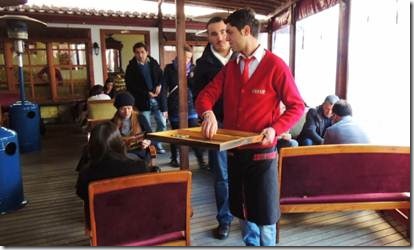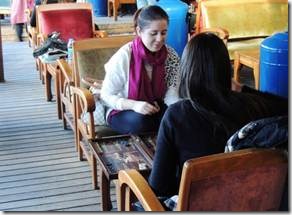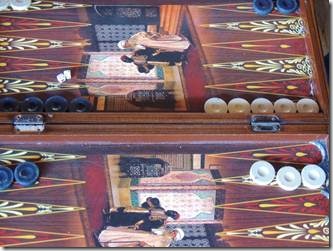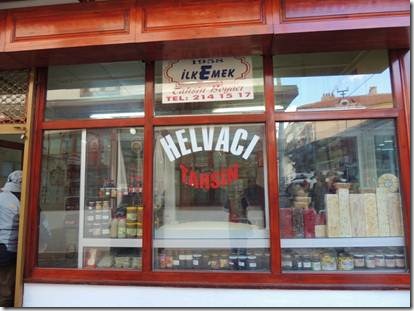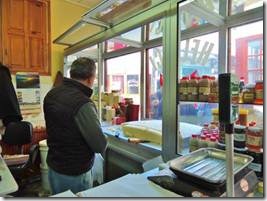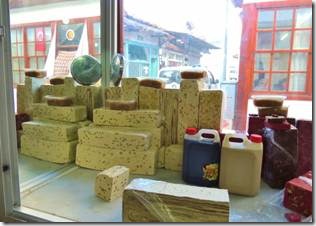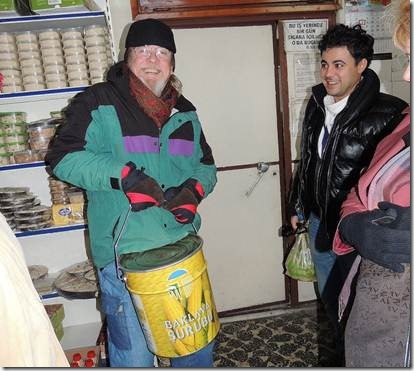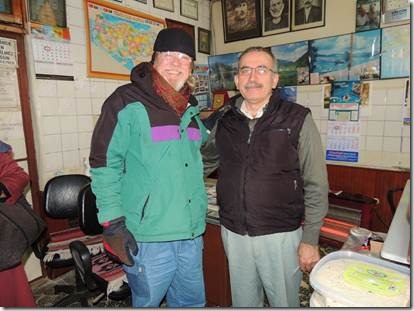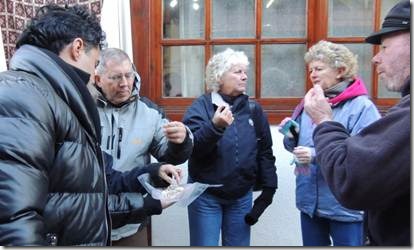Merhaba,
It’s raining so we’re catching up with inside tasks. Randal is cleaning the engine room. I’m trying to finish the emails about our Stratonikeia/ Muḡla trip. This email revolves around food and coffee. If you’re hungry, best read it later as there are photos of desserts. At the coffee shop in Muḡla we encountered coffee brewed in heated sand for the first time. And we visited what many consider the best helva or halvah shop in Turkey.
Ru
DoraMac
I like Muḡla. We’ve been twice now and I’ve liked it both times. Last August we spent the day with friends Bill and Judy visiting the painted mosque, the Thursday bazaar and open air fruit and vegetable market and walked through the sections of old Ottoman style shops and homes. No one gave us the “tourist sell.” The bazaar areas were mostly for the locals so it was low key and fun. For August, the weather was quite pleasant, cooler than seaside Marmaris. Muḡla is 660 meters ( 2,165 ft.) about sea level so though there are no cooling sea breezes, the altitude makes a difference much as it did in Jerusalem compared to seaside Herzliya or Ashdod. This visit to Muḡla we even saw minuscule snow flurries! Though I often rant against Wikipedia, I think they captured Muḡla fairly well.
“ Muğla (pronounced [moolah]) is a city in south-western Turkey. It is the center of the district the same name, as well as of Muğla Province, which stretches along Turkey´s Aegean coast. Muğla center is situated inland at an altitude of 660 m and lies at a distance of about 30 km (19 mi) from the nearest seacoast in the Gulf of Gökova to its south-west. Muğla district area neighbors the district areas of Milas, Yatağan and Kavaklıdere to its north by north-west and those of Ula and Köyceğiz, all of whom are depending districts. Muğla is the administrative capital of a province that incorporates internationally well-known and popular tourist resorts such as Bodrum, Marmaris and Fethiye.
The district area’s physical features are determined by several pot-shaped high plains abbreviated by mountains, of which the largest is the one where the city of Muğla is located and which is called under the same name (Muğla Plain). It is surrounded by slopes denuded of soil, paved with calcerous formations and a scrub cover which gives the immediate vicinity of Muğla a barren look uncharacteristic for its region. Arable land is restricted to valley bottoms.
A relatively small city of 61,550 (2009 estimates) and often overlooked by visitors to near-by coastal resorts, Muğla has received a new boost with the foundation of Muğla University in the 1990s. Today, the university brings together a student community of 16,000 and, added by its academia and staff, it played a key role in bringing movement to the city and in opening it to the outside world. Its former profile of a predominantly rural, difficult to access, isolated and underpopulated region enclosed with a rugged mountainous complex is now coming to an end. Also in recent years, a major program of restoration of the city’s architectural heritage has enhanced local tourism. The city remains an orderly, compact and leafy provincial center which could keep its old neighborhoods without surrendering to a boom in concrete constructions and displays a progressist mind as exemplified by the pride still expressed on having had Turkey’s first female provincial governor in the 1990s, Ms. Lale Aytaman. Nevertheless, Muğla still lacks sizeable manufacturing and processing centers and relies on trades, crafts, services, tourism and agriculture in its economy.” http://en.wikipedia.org/wiki/Mu%C4%9Fla
http://www.turkishairlines.com/en-int/skylife/2007/march/articles/mugla.aspx is another good description of Muḡla.
A good deal of what we did this visit to Muḡla was connected to food. First we ate lunch. Then we visited a coffee shop for Turkish coffee, decadent cakes and, for me ‘sicak ҫikolata’ hot chocolate.
|
Coffee brewed in heated sand one cup at a time: so don’t come to a coffee shop in a hurry, even where it’s brewed on a stove rather than sand. |
“A moderately low heat is used so that the coffee does not come to the boil too quickly—the beans need to be in hot water for long enough to extract the flavor. In a modern setting normal gas or electric heating is satisfactory. Traditional heating sources include the embers of a fire, or a tray about 10 cm (4 in) deep filled with sand. The tray is placed on the burner. When the sand is hot, the coffee pot is placed in the sand.[citation needed] This allows a more even and gentle heat transfer than direct heat. http://en.wikipedia.org/wiki/Turkish_coffee
|
Coffee is served in these cute tiny coffee cups that keep the coffee warm |
|
Gwen with her Turkish coffee. The cups are tiny but the coffee is strong and thick and sweet so you don’t need much unless you want to be awake for a week. |
|
Hard to describe this cake…though I think there may be some marzipan at work here. Between us Randal and I could not finish one piece which is saying something about how heavy and dense it was. Amazingly enough it wasn’t overly sweet. Have no idea what it really is. Randal saw Ed eating a piece one ordered one based just on how it looked. Had I known our next stop was the best halva shop in Muḡa, I would have skipped the hot chocolate and helped less with the cake. |
|
Backgammon is a popular past time in Turkey http://www.bkgm.com/articles/Crane/TavlaInTurkey/index.html is a “tongue-in cheek” introduction to Turkish gackgammon culture by a member of the British Backgammon Association. |
|
Not just for men, lots of women were playing in the coffee shop on these lovely decorative boards. I have no clue how to play. |
|
As I said, our next stop was the halva shop. Randal and I aren’t halva fans though most of our friends, Linda and Michael, Charmaine and Linda, and Rick and Mary are so from time to time we eat it. It reminds me of the filling of “peanutbutter cream patties” that we ate in grade school which was very sugared peanut butter. I know there are grades of halva and the best must be much better than sugared peanut butter. But the last thing we need is to develop the taste for yet another sweet treat. |
|
The name of the shop is Helvaci Tahsin which translates to halva in my dictionary. Tahsin seems to relate to the word sesame, a word not listed in the English halves of either of my Turkish dictionaries. Nor is tahini listed. |
|
24 March 2008 / SHARON CROXFORD , İSTANBUL http://www.todayszaman.com/newsDetail_getNewsById.action?load=detay&link=137059 for the entire interesting article telling the history and ingredients of various versions of halva. “The Larousse Gastronomique states that "halva or halvah" is "an Eastern sweetmeat based on roasted sesame seeds, which are ground into a smooth paste (tahin) and then mixed with boiled sugar. It has a high fat content and, although very sweet, a slightly bitter taste. Other types of halva can be aerated and whipped and cream or crystallized (candied) fruit may be added." Many people’s perception of halva (or "helva," as it is known in Turkey) would fit in well with the Larousse definition and, while not technically wrong, by dismissing halva so easily they are missing out on some of the best tasting and simplest sweets and desserts available. Halva is spelt in as many ways as there are varieties of the sweet: halva for English speakers, halava in Sanskrit, halvah for Hebrew, halwa in Hindi or Arabic and then more. The true origins of halva reflect this collection of languages, all centered around countries east of Europe and, while many cultures lay claim to inventing the delicious food, historians believe that it is an ancient confection originating in the Middle East. In fact, the name halva comes from the Arabic word hulw, which means sweet. In the seventh century hulw consisted of a paste of dates kneaded with milk. In the following centuries, as its popularity spread with the conquering and assimilation of cultures, the term referred to toasted flour or semolina mixed with honey or a sugar, date or grape syrup and made into a paste over a medium heat. Since then it has evolved into a multitude of things, incorporating an assortment of ingredients and cooking methods. |
|
The halva with the stripes is chocolate…that’s what Mary and Rick chose. We didn’t buy any halva, but we did buy something else… |
|
Corn syprup. To make pecan pie you need corn syrup which isn’t sold in any of the markets in Marmaris. (Of course neither are pecans, but that’s another story.) A main ingredient in halva is corn syrup so the shop had lots but could only sell it in 5 gallon containers. The price was right so we bought a container thanks to Taz acting as translator. |
|
Mevlut Kesici the shop owner and halva maker with Randal |
|
Taz handing around some samples. |
That concludes the food part of the tour but we still had more activities including my visit to the Muḡla Public Library.
No virus found in this message.
Checked by AVG – www.avg.com
Version: 2013.0.2890 / Virus Database: 2638/6026 – Release Date: 01/11/13

